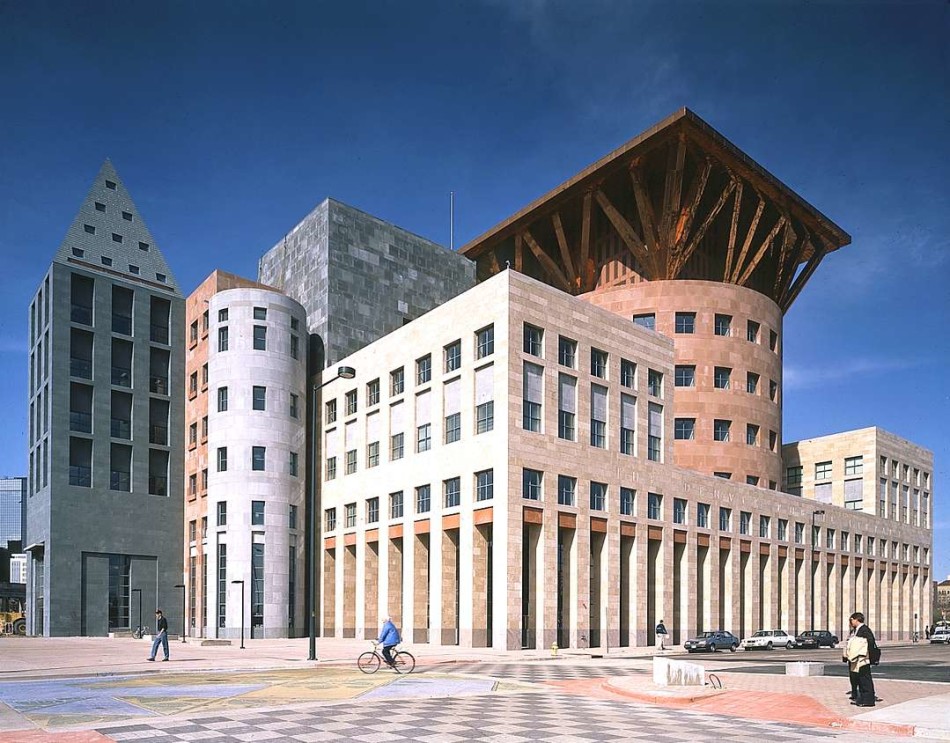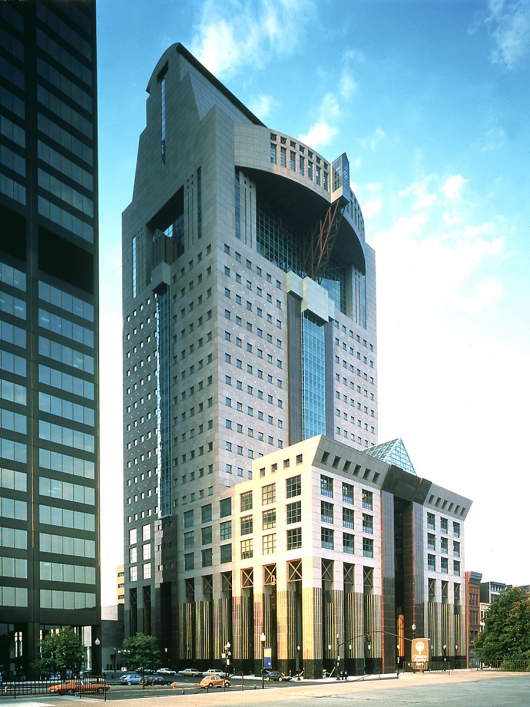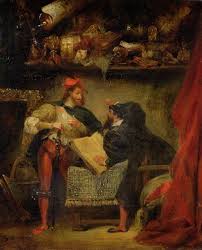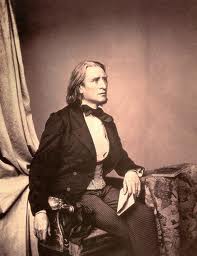
They say (quoting Goethe) that architecture is “frozen music;” so it seems appropriate to mark the sudden passing of one of the giants of American architecture. Michael Graves passed away yesterday at age of 80 at his home, “The Warehouse,” in Princeton, New Jersey. A member of “The New York Five,” he rose to prominence in the 1980s as one of the leading Postmodern architects. In keeping with postmodernism, Graves’ sometimes controversial architecture defied the formal purity and austerity of modernism and openly drew upon historical precedent. For example, the Denver Public Library (above) brought whimsical turreted towers to downtown Denver. Dignified columns lining the facade suggest the monumentality of ancient Rome.
Michael Graves’ buildings often exhibit cheerfully exuberant colors. Occasionally they play tricks with our sense of scale. The crown of Louisville’s 26-story Humana Building (below) evokes the bridges of the nearby Ohio River. The base of the building echoes adjacent historic storefronts, but at a blown-up scale. The base’s large windows and wacky proportions make the entire composition seem smaller than it actually is, and less overbearing to its neighbors. Simultaneously, it pays respect to history without copying it, creating something exciting and new. Unfortunately, aspects of Graves’ style were quickly (and less artfully) copied in strip malls across the country.
In conjunction with Alessi, Michael Graves was also influential in product design. For years his designs, ranging from tea kettles to clocks, were bestsellers at Target stores. Following a spinal chord infection in 2003, which left him paralyzed from the waist down, Graves developed a passion for improving hospitals and other facilities for the disabled.

[unordered_list style=”tick”]
[/unordered_list]
Michael Torke’s Musical Postmodernism
There are some key differences and similarities between music and architecture: Music is pure art, while architecture is a mix of art and utility. A bad piece of music is avoidable and short-lived. An architectural mistake is there for a long time, and as Frank lloyd Wright pointed out, planting vines may be the only way to solve the problem. At their best, both music and architecture are “of the spirit.” Elegant solutions seem to flow out of limitations. Ideas emerge in a flash and then develop. From the inner ear of the composer to the architect’s pencil sketch, the same mysterious creative process is at work.
In a previous post we explored the similarities between architectural and musical postmodernism. For me, Michael Torke’s music embodies the same playful postmodern spirit we see in Michael Graves’ buildings. Listen to Javelin (1994) and see if you agree:
And here is Run (1992), a piece in which one exuberant motive finds continuous musical adventure. Listen to the way this motive slowly takes shape in the opening. Torke seems to make an almost cartoonish reference to Steve Reich’s additive process (gradual change by adding one note at at time).
Torke describes the piece saying,
Though this music is not meant to be programmatic, one could imagine the moving panorama and feeling of uplift in a morning jogger breathing in the still fresh urban air.
[unordered_list style=”tick”]
[/unordered_list]


